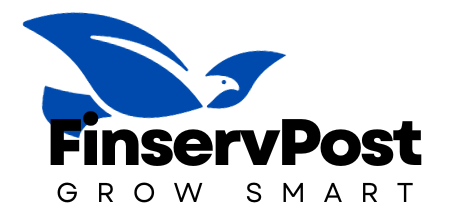What is NACH? In a world where convenience is key, the demand for seamless and efficient banking transactions has reached new heights. NACH, or National Automated Clearing House, is transforming the way businesses and consumers manage their financial transactions in India. In this article, we’ll explore what NACH is, how it operates, the benefits it offers, and its potential impact on the future of banking. Join us as we dive into this innovative payment system designed for today’s fast-paced digital landscape.
What is NACH?
At its core, NACH is an electronic payments system used in India for automated clearing house transactions. Designed to facilitate transactions such as direct debits, it offers a more efficient alternative to traditional banking methods. But what exactly does this mean for you?
Fundamental Features of NACH
- Automation: NACH automates the processing of recurring payments, making it easy for service providers, such as utilities and subscriptions, to collect dues every month.
- Wide Acceptance: Supported by major banks, NACH is becoming a preferred method for businesses across various sectors.
- Cost-Effective: The banking fees associated with NACH transactions are generally lower compared to traditional bank transfers or checks.
- Speed: Compared to traditional methods, NACH transactions are quicker, enhancing cash flow for businesses and ensuring timely payments for consumers.
How Nach Operates
Understanding how NACH works is essential to appreciating its benefits. It employs a structured framework that simplifies the transaction process.
The Functional Process of Nach
- Customer Authorization: Customers must authorize a one-time mandate giving businesses permission to debit their accounts.
- Data Submission: Businesses submit the mandate and payment details to their banks.
- Processing: The banks process these requests in batches, usually on a specified date (e.g., the 1st or the 15th of each month).
- Clearing: The system reconciles transactions between banks, ensuring that funds are transferred efficiently.
- Confirmation: Both parties receive notifications about the successful transaction.
Did You Know? NACH transactions occur in batches, which means multiple transactions can be settled simultaneously, enhancing efficiency for all parties involved.
Benefits of Embracing NACH
Adopting the NACH system comes with a slew of advantages for both consumers and businesses.
Advantages for Businesses
- Predictable Cash Flow: Regular payments ensure that businesses can better manage their finances and plan for the future.
- Reduced Administrative Work: With automatic payments, companies spend less time on collections and more time on strategic initiatives.
Advantages for Consumers
- Convenience: Consumers don’t need to remember payment dates or worry about late fees.
- Improved Budgeting: With predictable payments, individuals can manage their finances better, knowing when funds will leave their accounts.
Enhanced Security and Trust
Another significant advantage of NACH is its focus on security. Transactions are encrypted and monitored, minimizing the risk of fraud. The requirement for customer authorization adds another layer of protection, ensuring that funds are only withdrawn with the customer’s consent.
The Future of NACH in Banking Transactions
As the digital landscape evolves, so does the role of NACH. Its potential to integrate with emerging technologies could further enhance its utility:
Integration with Financial Technologies
- Mobile Payments: As mobile banking becomes more prevalent, downstream integration with apps can simplify payment processes even further.
- Artificial Intelligence: AI can predict payment defaults and analyze spending patterns, offering businesses insights for better cash flow management.
Expanding Use Cases
The future of NACH isn’t just limited to recurring payments. Its structure makes it an ideal candidate for:
- Loan Repayments: Automating loan repayments can lower the chances of defaults.
- Insurance Premiums: Allowing customers to set and forget their payments can enhance customer satisfaction.
Transaction Limit of Nach Mandate
Typically, the transaction limit for “NACH Mandate” can vary depending on several factors, including the agreement between the business and the customer, as well as the policies of the bank involved. It’s important for customers to be aware of any maximum withdrawal limits set forth in their agreement, as exceeding these limits can lead to declined transactions or additional fees.
For businesses, keeping track of these limits ensures smooth cash flow and helps avoid any surprises when it comes to customer payments. Clear communication about these limits in the initial agreement can foster trust and reduce potential disputes.
The transaction limits for a National Automated Clearing House (NACH) mandate vary based on the type of mandate:
- Physical Mandate: Up to Rs 1 crore
- E-Mandate for Recurring Payments: Up to Rs 10 lakhs
- E-Mandate for Security Mandate: Up to Rs 50 lakhs
- eSign Based E-Mandate: Up to Rs 1 lakh
Disadvantages of NACH in the Banking System and Measures to Mitigate Them
The National Automated Clearing House (NACH ) has undoubtedly revolutionized the way we conduct financial transactions in India. However, like any system, it comes with its own set of challenges. Understanding these disadvantages can help stakeholders address them effectively, ensuring a smoother experience for users.
1. Dependence on Technology
One of the most significant disadvantages of NACH is its heavy reliance on technology. System outages, server failures, or cyberattacks can disrupt transactions, leading to delays and frustration.
Mitigation Measures:
To counter this, banks and financial institutions need to invest in robust IT infrastructure and backup systems. Regular system audits and cybersecurity measures can help identify vulnerabilities before they become serious issues.
2. Limited Accessibility for Rural Areas
Despite the growing digital landscape, not all regions in India have equal access to the technology needed for NACH transactions. Rural areas, in particular, may face challenges due to poor internet connectivity and a lack of digital literacy.
Mitigation Measures:
To bridge this gap, banks can offer training programs that enhance digital literacy and provide mobile banking solutions that work offline. Collaborations with local businesses can also help in creating access points for transactions.
3. Fraud Risks
With any automated system, the risk of fraud increases. Cybercriminals can exploit vulnerabilities to conduct unauthorized transactions, putting users’ funds at risk.
Mitigation Measures:
Implementing stringent security measures like two-factor authentication, transaction alerts, and continuous monitoring of account activity can help protect users. Educating customers about common fraud schemes is also crucial in preventing them from falling victim to scams.
4. Transaction Limits and Charges
NACH has certain transaction limits and associated fees that can be a drawback for businesses and consumers. These limits may hinder larger transactions, particularly for small businesses that need to manage cash flow efficiently.
Mitigation Measures:
Banks can consider offering tiered transaction limits based on the customer’s profile and transaction history. Transparent communication about fees can help users make informed decisions about using the service.
5. Complexity of the System
For many users, navigating the Nach system can be daunting, especially for those unfamiliar with digital banking. This complexity can lead to errors and misunderstandings during transactions.
Mitigation Measures:
To enhance user experience, banks should provide clear, straightforward guides and customer support. A user-friendly interface and interactive tutorials can empower customers to use the system confidently.
Conclusion on What is NACH
NACH is not just a trend; it represents a significant shift in how banking transactions are conducted in India. By understanding its workings, benefits, and future potential, both businesses and consumers can harness its power to create a more efficient financial ecosystem.
As this system continues to evolve, one thing is certain: the future of seamless banking transactions is bright. If you haven’t yet explored the opportunities offered by Nach, now is the time to consider integrating it into your financial practices. For more information on digital banking innovations, check out articles on the Reserve Bank of India website or consult your bank for personalized advice on adopting Nach.
Are you currently using NACH in your banking transactions? Share your experiences in the comments below!
FAQs – Related to What is NACH
What is NACH Mandate?
NACH Mandate refers to a direct debit system widely used in Germany that allows businesses to withdraw payments directly from a customer’s bank account with their consent. It streamlines payment processes for recurring bills and subscriptions.
How does the NACH Mandate process work?
To initiate a NACH Mandate, a customer must provide authorization to a business, typically through a signed mandate form. Once authorized, the business can automatically withdraw agreed-upon amounts from the customer’s account on specified dates.
Are there any transaction limits with NACH Mandate?
Yes, transaction limits can vary depending on the agreement between the customer and the business, as well as the policies of the bank. It’s essential to clarify these limits in the mandate to avoid issues with payment processing.
How can I cancel a NACH Mandate?
To cancel a NACH Mandate, you should notify the business that holds the mandate. Additionally, it’s a good idea to inform your bank to prevent any future withdrawals from occurring. Make sure to follow up to confirm the cancellation.
What happens if a transaction exceeds my account balance?
If a transaction exceeds your account balance, it may result in a failed payment. This could lead to additional fees from your bank and potential complications with the service provider. Always ensure that you maintain sufficient funds to cover scheduled withdrawals.
Is NACH Mandate safe for consumers?
Yes, NACH Mandate is generally considered safe, especially since it requires prior authorization. However, consumers should regularly monitor their bank statements to ensure that all transactions are legitimate and correctly processed.
Can I use NACH Mandate for international payments?
NACH Mandate is primarily used within Germany. For international payments, other systems like SEPA (Single Euro Payments Area) may be more appropriate, although they also involve direct debit functionalities.
What types of payments are commonly made using NACH Mandate?
NACH Mandate is often used for recurring payments such as utility bills, subscription services, and membership fees. Its convenience makes it an attractive option for both businesses and consumers.

